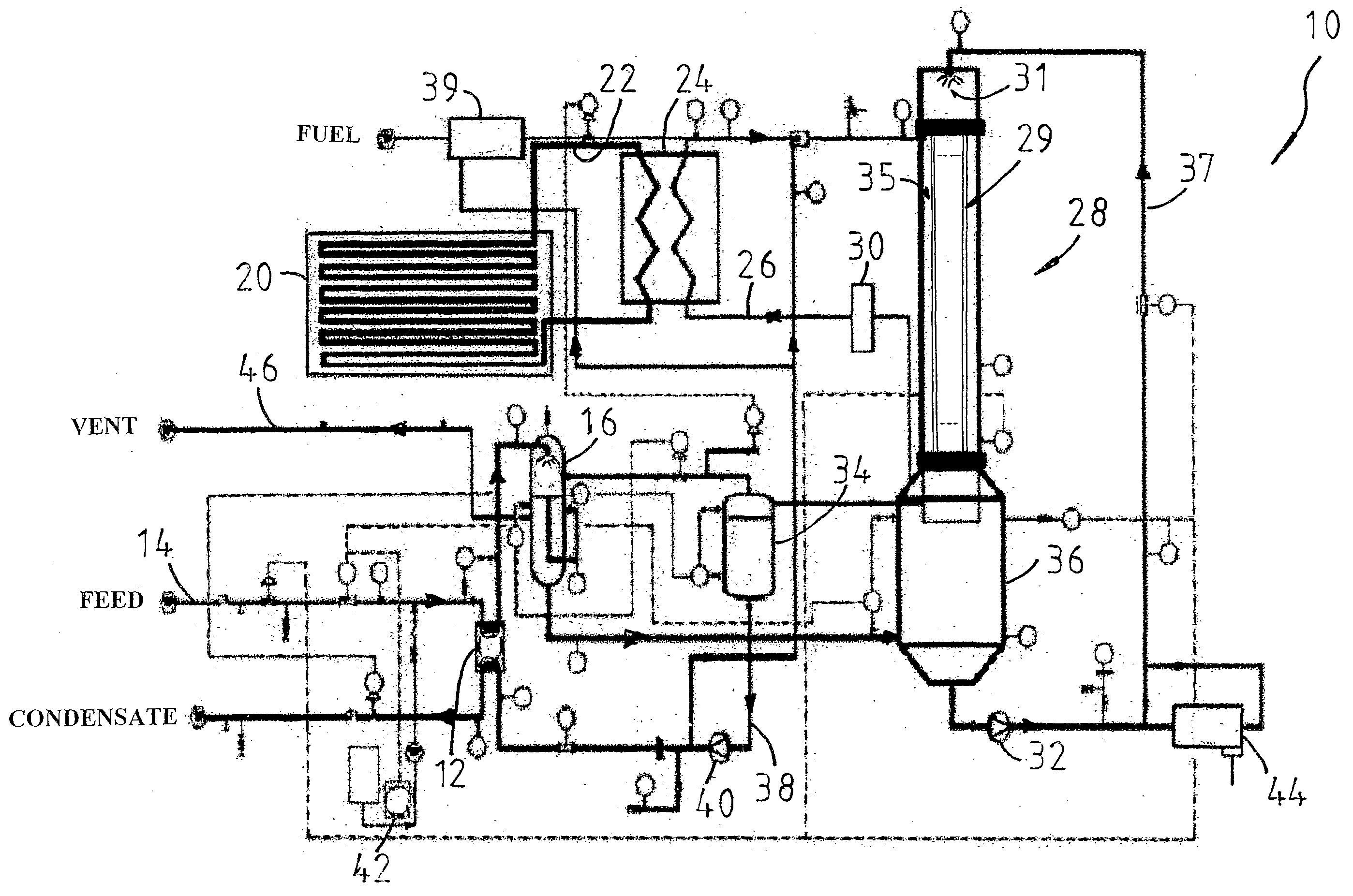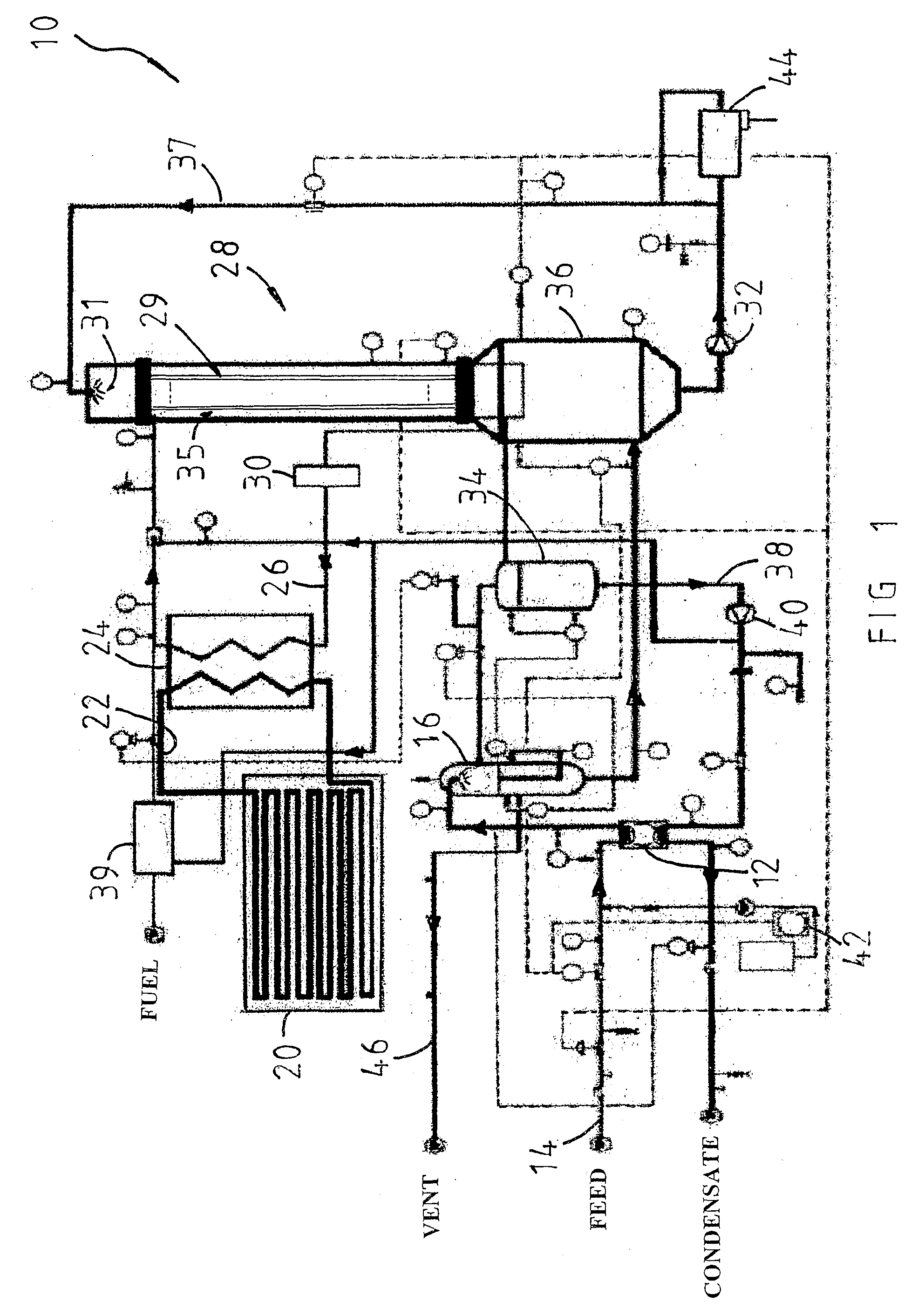Water Distillation System
a technology of water distillation system and water distillation temperature, which is applied in the direction of auxilaries, water/sludge/sewage treatment, vessel construction, etc., can solve the problems of further reduction in efficiency, congested sea water, and low distillation temperature to kill bacteria
- Summary
- Abstract
- Description
- Claims
- Application Information
AI Technical Summary
Benefits of technology
Problems solved by technology
Method used
Image
Examples
Embodiment Construction
[0045]Referring to FIG. 1, the embodiment of the water distillation system 10 as shown has a secondary heat exchanger 12 arranged to receive feed water flowing in a feed water line 14 that is connected to a feed water source referred to as “FEED” such as a salt water tank. The feed water from the secondary heat exchanger 12 is conveyed to a deaerator 16 and ejected thereat as a spray. Undesired gases in the feed water are released to atmosphere through line 46 and “VENT”. Deaerated water is then transferred to a reservoir 36 in a flashing stage 28. It should be noted that while one flashing stage 28 is described and shown for this embodiment, a plurality of flashing stages can be incorporated into the system 10 according to the present invention.
[0046]The system 10 also has a heat storage arrangement 20 which in this embodiment is in the form of an energy storage vessel and it uses off-peak electricity as energy source for charging energy storing media such as graphite in the storag...
PUM
 Login to View More
Login to View More Abstract
Description
Claims
Application Information
 Login to View More
Login to View More - R&D
- Intellectual Property
- Life Sciences
- Materials
- Tech Scout
- Unparalleled Data Quality
- Higher Quality Content
- 60% Fewer Hallucinations
Browse by: Latest US Patents, China's latest patents, Technical Efficacy Thesaurus, Application Domain, Technology Topic, Popular Technical Reports.
© 2025 PatSnap. All rights reserved.Legal|Privacy policy|Modern Slavery Act Transparency Statement|Sitemap|About US| Contact US: help@patsnap.com


